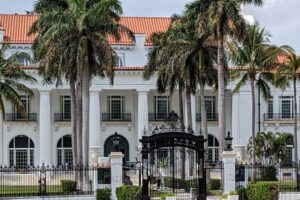Remember an earlier post from Charlottetown when we talked about the French coming from Louisbourg to meet the local natives, Mi’Kmaq, for their annual get-togethers? Today we drove to the reconstructed fortress of Louisbourg to get a glimpse of what life looked like in the 1700s. We’ve actually seen this town used in period movies.

It’s called a fortress rather than a fort, because the enclosure surrounded the town as well as the military bastions. (A bastion is a projecting part of a fortification built at an angle to the line of a wall to allow defensive fire in several directions.) If you’ve been to St. Augustine in Florida, you probably saw a similar fort design at the Spanish fort where the fortification areas are built at an angle.
The Fortress of Louisbourg brings us back to one of North America’s busiest 18th century seaports. Originally founded by the French in 1713, it fell twice to the British. After defeating the French a second time in 1758, the British were tired of fighting for this area, and turned the canons from the sea to the town and leveled it in 1760. Now the British were able to turn their attention to making colonies in North America.



Have you been to the French countryside? I went there a number of years ago for a few days with my friend Susie, and as we walked around the fortress, I really felt like I was back in France.
Let’s look at the town for a while before going into the details.






So you can acclimate to what we’ll be seeing, here’s the site map of the reconstructed fortress. The small picture in the bottom right corner shows the Louisbourg Harbor and the location of the fortress. The gold arch we saw on the main street picture is on the left side in the middle, the Dauphin Demi-Bastion we’ll be walking around is at the bottom, the King’s Bastion is on the top right, and the town is in the middle.

gold arch
The Frederic Gate’s ornate arch is the main entry for most of the people coming in by ship, as well as the news and merchandise that came to the colony.

Dauphin Demi-Bastion
This half bastion forms part of the fortress’ defense system. Its canons are reproductions of French 24 livres guns because they fired a round iron ball weighing 24 livres (almost 26 lbs.)
Dauphin Gate

Through its massive doors, the path is flanked by guardrooms: soldiers on one side and officers on the other.

The building on the left is the barracks for discharged soldiers who were waiting for transport back to France.

The original 18th century walls extend almost to the eaves of the building.

outside of the bastion
Outside of the demi-bastion along the water was a series of homes for the fisherman. They weren’t solid buildings since those living there knew that they would be the first in line when the British attacked.



King’s Bastion
The main bastion of the fortress, the King’s Bastion also housed the chapel on the left, the governor’s living quarters to the left of the chapel, and the barracks on the right for the single soldiers (the married soldiers lived in the town). The roof of the guardhouse shows in the bottom right-hand corner.


guardhouse
The guardhouse is in the open area before the bastion. It was an area where soldiers mustered for drill and guard changes happened. From the squad of soldiers stationed here, the officer-of-the-guard posted the sentries.


See the fireplace on the left?

Barracks for the soldiers with one of today’s sentries.


entrance to the bastion



No mess halls or workrooms were in the barracks. The men had to cook, eat, drink, smoke, gamble, and live in their rooms.

This military chapel also served as a parish church since a community church was never built. The patron over the alter is the saint-king of France, Louis IX. Hence the name of Louisbourg for the fortress.

governor’s apartments
The governor represented the king’s majesty in person and often lived lavishly. The Superior Council met in the chambers downstairs, as did single officers and the priest who served at the chapel.


The day being lived by the sentries and townspeople is the day after the governor had died and everyone was appropriately sad.


homes and buildings we visited
De Gannes House – Michel de Gannes de Falaise lived here with his wife, Elisabeth, and their 6 children.

Michel was born in Port-Royal, Acadia, (other side of Nova Scotia) to a high-ranking officer in the Compagnies Franches. So what is that? Here’s some information I found online.
The Compagnies Franches de la Marine were an ensemble of autonomous infantry units attached to the French Royal Navy to serve on land and sea. They were France’s principal military force overseas for intervening in actions and holding garrisons from 1690 to 1761. Independent companies of the navy and colonial regulars, they were under the authority of the French Minister of Marine, who was also responsible for the French navy, overseas trade, and French colonies.
In North America, these were the only regular soldiers stationed by the Crown from 1685 to 1755; that year several army battalions were dispatched to North America during the Seven Years’ War between France and Great Britain that was being waged in Europe and North America.
Back to de Gannes, by age 28, he was captain of his own company, and by when he died at age 50, he had attained the position of King’s Lieutenant.


It would take young girls years to learn how to do this quickly. The residents didn’t make their thread here since they were just a fortress; everything was shipped over from France that is directly east of Louisbourg on the other side of the Atlantic Ocean.

One of the main duties of the nanny was to keep the children away from the fire.


Rodrigue Storehouse


The Rodrigue family were successful merchants, frequently sailing ships to Quebec with French and West Indian goods to trade for the Canadian grain, flour, and dried vegetables that Louisbourg needed. Anne Rodrigue was described in an official document as a marchande, something unusual for a married woman. Their home and the storehouse share a wall.
King’s Storehouse
Across the street from Frederic’s Gate, this building was the central receiving depot for merchandise needed by a fortress and its garrison.


Ordonnateur’s residence
This large property close to the wharf was the official residence of the commissaire-ordonnateur, the administrator responsible for pay, supply, and justice. He reported to the Ministry of the Marine (the department of the government responsible for the French navy and colonies).


Notice the stove on the left? The fire would have been built below and pots put over the holes on the cook top. Baking ovens are in the middle behind the work table.


The rooms upstairs were decorated for an important man who would have entertained often.


ice house
Now this is really interesting.

These structures were stocked during the winter months with ice cut from frozen lakes. The ice was placed in the inside pit and then packed with layers of straw for insulation.

what about during the summer?






beginning of the fortress
Here’s an original fortress drawing.

In 1713, the French chose this location as the “most suitable place” for a new settlement for their colony because the terms of the Treaty of Utrecht with the British made them leave Newfoundland and the western side of Nova Scotia.

Louisbourg was chosen for its large harbor, good beaches for drying cod, and its proximity to the fishing grounds. While the area wasn’t going to be easy to defend, the French protected their valuable capital by building walls to encircle it to make a fortress out of a fishing community. The French assumed the British would attack from the water, but they didn’t. They attacked from the land side, and the French weren’t prepared for that type of attack.

cost of building the fortress
While it was expensive to build Louisbourg, the total for the French never exceeded the cost of outfitting a large warship for a 6-month patrol of these waters.

security
Fascinating security protocol: After closing the gates each evening, the military held an elaborate ceremony they called “the Grand Circle.”
Near the main guard post, the town major with his aides stood inside a circle formed by sergeants from each of the companies and guard posts, which in turn was surrounded by a ring of corporals facing outward.

The corporals pushed back anyone within hearing distance, and the sergeants removed their hats to muffle their voices while the town major whispered the password to the senior sergeant. The others whispered it around the circle. If the password came back to the town major incorrectly, the procedure was repeated. (Perhaps this is the origin of the child’s game “telephone”?) Then the circle was dismissed.

learning about life in Louisbourg
Louisbourg was home to soldiers, fishermen, officials, innkeepers, servants, and slaves. Its 50 years as a French colonial capital left a rich and largely undisturbed archaeological record, as well as vast archives of official and person papers.

The McLennan Center was built soon after Louisbourg was designated as a National Historic Site in 1928.



In 2013, it was renamed in honor of John Stewart McLennan and his daughter, Catherine McLennan, who brought national attention to this historical site.


King’s Gardens
Between the King’s Bastion . . .

and the McLennan Centre . . .

is the King’s Gardens.

This plot of land was reserved for the King’s Garden. The fruit, vegetables, and herbs grown here were solely for the use of the governor, the civil administrator, and other top-ranking officials in Louisbourg.

The current stone wall was erected in the 1950s and does have some stone and brick from the original town.

What a great day on the coast of Cape Breton Island, Nova Scotia. We were glad for a sunny day that was a little on the cool side—but better than being hot! Even the docents working at the fortress were “sunny” and seemed to be happy to be there. The guard who met us when we first got there had a French accent and was such a wonderful greeter.




